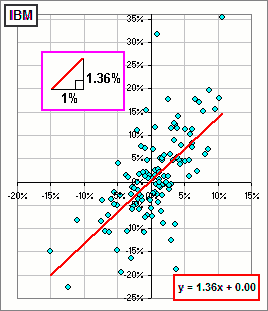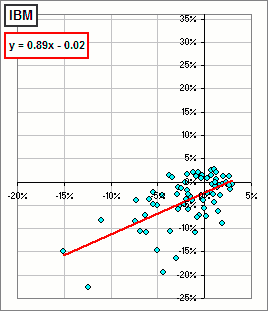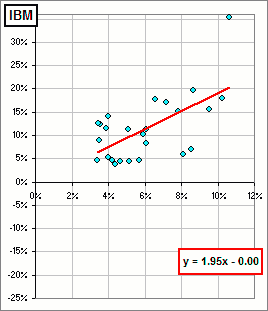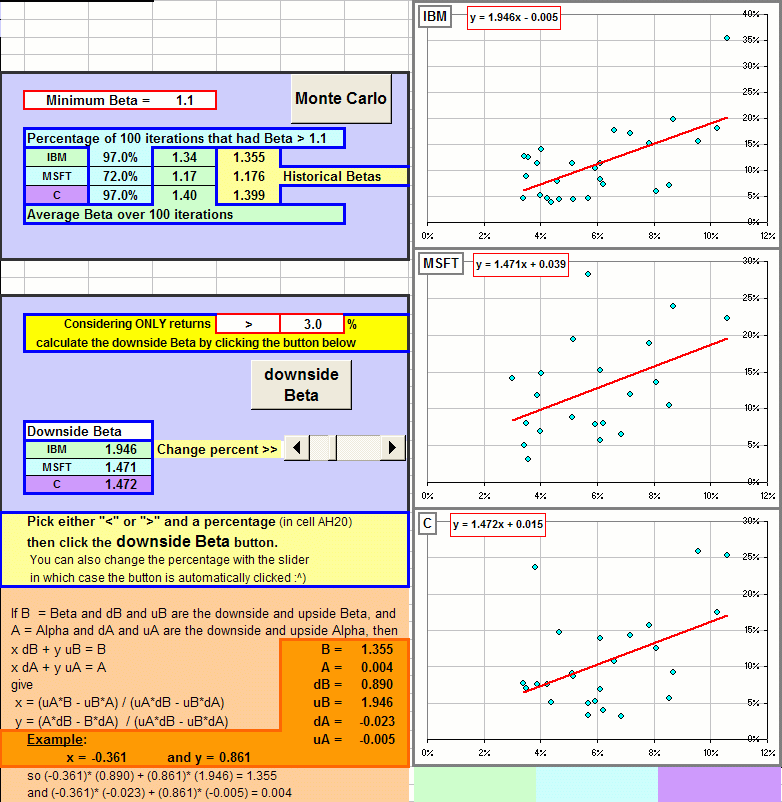| downside Beta |
|
While we're talking about Beta I thought we should mention "downside beta".
>Huh? Never heard of it.
Anyway, we get monthly (or weekly or annual etc.) returns for the past umpteen years and plot the return of some asset or portfolio
The slope of the regression line (or best fit line to these points) is called Beta.
>I assume that means "roughly", not exactly, right?
>And if DOW drops 1% then we might expect IBM to drop "roughly" 1.36%, right?
|  Figure 1 |
>So you ignore the returns greater than 3%, eh?
|
You got it! Then we'd get a subset of the points in Figure 1.
In fact, we'd get Figure 2. Do you see the points retained? We just tossed out the returns greater than 3% and did another regression. >You tossed out the DOW returns, too!
>But the slope, Beta, is just 0.89 in Figure 2.
|  Figure 2 |
|
>And when the returns are good, say greater than 3%?
Yeah, that'd be interesting, too. See Figure 3? Beta for them "good" returns is 1.95 so that means ... >IBM does MUCH better than the market when the market is good, right?
>But then we're not talking "downside" Beta ... we're talking "upside" Beta.?
|  Figure3 |
>I assume there's a spreadsheet?
Yes. So far it's a modified version of that 4-stock-regression.xls spreadsheet we talked about before... except it's got a piece that looks like this:

>What's all that stuff about solving for x and y?
Just in case you think that downsideBeta + upsideBeta= Beta, it ain't true.
In fact, since Beta and Alpha are the slope and intercept for the regression line, we can solve for x and y such that:
x*downsideBeta + y*upsideBeta = Beta
x*downsideAlpha + y*upsideAlpha = Alpha
... and that's done in the spreadsheet. 


